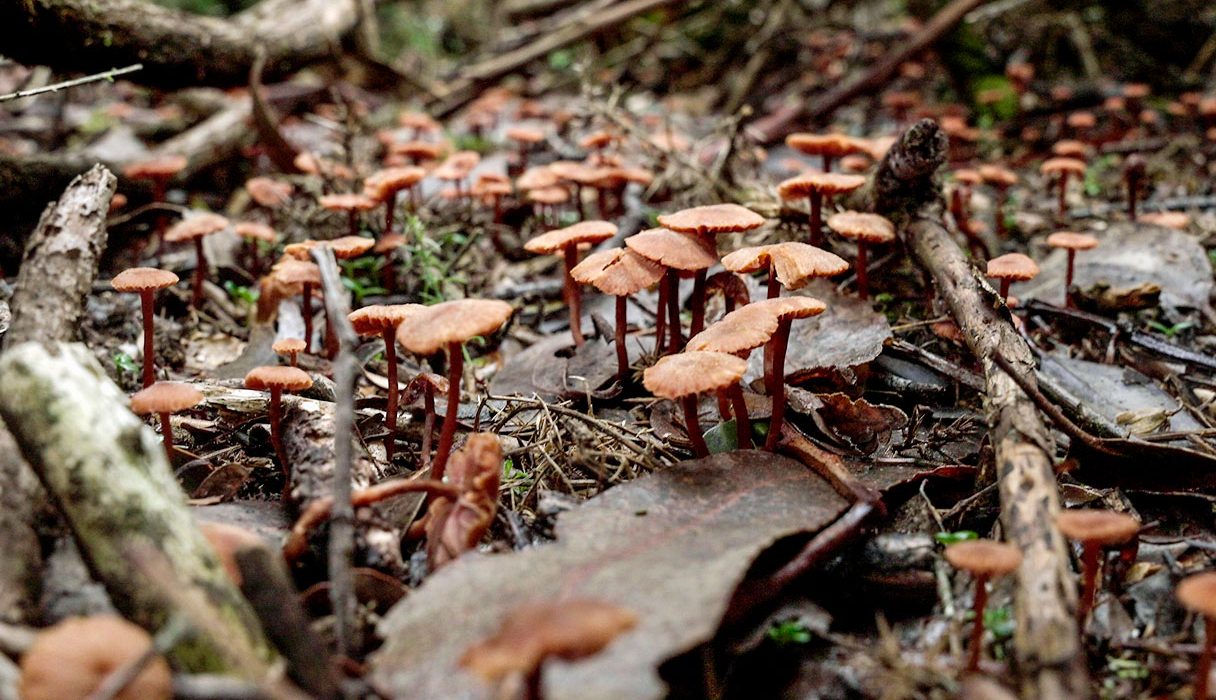Significant sections of the great fabric of fungal diversity remain unexplored, particularly among insects and fungi. These organisms, which include millions of species that have yet to be cataloged by science, constitute a new frontier for investigation and conservation in the face of accelerating global biodiversity loss.
Academy Research Fellow Nerea Abrego of the University of Jyväskylä discusses the astonishing biological repository revealed in air samples. Airborne DNA contains evidence of various organisms—plants, bacteria, fungi, insects, animals, and others—and provides a non-invasive view of their spread and ecological significance across landscapes.
Innovative Research: Identifying Fungal Diversity:
Abrego’s ground-breaking study, published in Nature, used DNA quenching to interpret fungal variety from air samples gathered around the world. This revolutionary approach revealed new fungus species and illuminated the environmental and genetic variables determining their geographic distribution and seasonal shifts.
To record the diversity of aerial fungi, the study used rigorous sampling techniques across various environments, including temperate forests, tropical rainforests, and dry landscapes. By examining DNA recovered from these specimens, researchers found known fungal taxa as well as previously unknown species, adding to our understanding of worldwide fungal diversity.
Significance for Climate and Growth:
Understanding fungi’s biological niches and responses to climate change is critical to forecasting their future ranges and environmental implications. Abrego’s studies shed light on how climatic variables such as humidity, temperature, and precipitation affect fungal population compositions and seasonal patterns.
The insights gathered from this work are critical for biodiversity conservation initiatives in a rapidly changing world. Researchers can help preserve ecological integrity and resiliency by anticipating how fungi, as keystone species in ecosystems, would adapt to environmental changes.
Revolutionizing Biodiversity Observation:
Otso Ovaskainen, a professor at the University of Jyväskylä, believes that better sampling techniques will revolutionize biodiversity monitoring. Ovaskainen’s research combines cutting-edge genetic testing with information gathered via remote sensing, audio recordings, and video traps to monitor a wide range of creatures around the world.
The combination of DNA metabarcoding (a technique for simultaneously identifying numerous species from environmental samples) with high-resolution pictures and audio data provides an enormous advance in biodiversity surveillance. This multimodal strategy enables researchers to track not only fungi, but also insects, birds, mammals, and amphibians across several ecosystems and continents.
Difficulties of Large-scale Data in Biodiversity Research:
The exponential expansion of biodiversity data creates substantial computational and analytical hurdles. Ovaskainen’s team uses cutting-edge mathematical modeling, bioinformatics algorithms, and machine learning strategies to identify meaningful patterns from large datasets containing decades of ecological observations and billions of DNA sequences.
Researchers may reveal complicated ecological connections, track where species are found over time, and forecast ecosystem responses to climate change by establishing strong data integration and analytic tools. These prediction capacities are critical for effective conservation planning and healthy natural resource management.
Insights about Fungal Disease:
Given fungi’s airborne dissemination mechanisms, Abrego’s research covers a wide range of fungal species, including lichens, bracket fungi, molds, and yeasts. Fungi are particularly interesting, as they have consequences for human health, farming, and environmental dynamics.
Fungal infections have an important role in spreading illnesses among humans, animals, and crops. Understanding the location and quantity of pathogenic fungi in the environment is critical for reducing disease outbreaks and maintaining agricultural output. Furthermore, fungal symbionts improve ecosystem function by enabling nutrient cycling, increasing plant resilience, and promoting biodiversity.
Petition for Forest Conservation:
Abrego is leading a pioneering attempt to integrate air sampling and novel research approaches into Finland’s national forest inventory. This collaborative endeavor, financed by the Department of the Environment, seeks to improve understanding of natural diversity, particularly understudied fungi and insects, across Finland’s various landscapes.
Abrego’s team creates complete biodiversity data for evidence-based conservation plans by combining modern sampling technology and interdisciplinary research approaches. This program not only expands scientific knowledge but also influences laws and regulations aimed at protecting forest ecosystems and supporting ecologically sound land use practices.
Conclusion:
Researchers such as Abrego and Ovaskainen are working together to reshape our comprehension of global biodiversity using innovative sampling methods and modern data analytics. They provide critical insights into the ecological processes of fungi and other species important to planetary wellness and resilience by revealing the secrets buried in air samples.
As the decline in biodiversity accelerates globally, the combination of DNA metabarcoding, mapping technology, and computational modeling shows potential for proactive preservation and long-term management of Earth’s various ecosystems. Investing in the monitoring of biodiversity and research helps protect the biological legacy for the generations to come and builds a harmonious interaction between humankind and the natural world.

